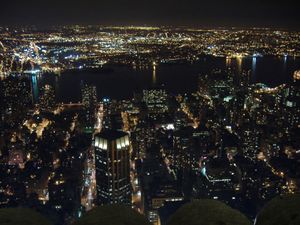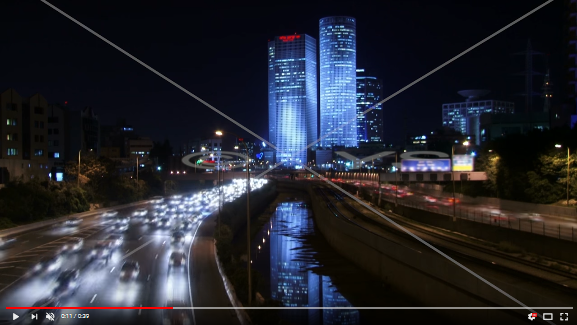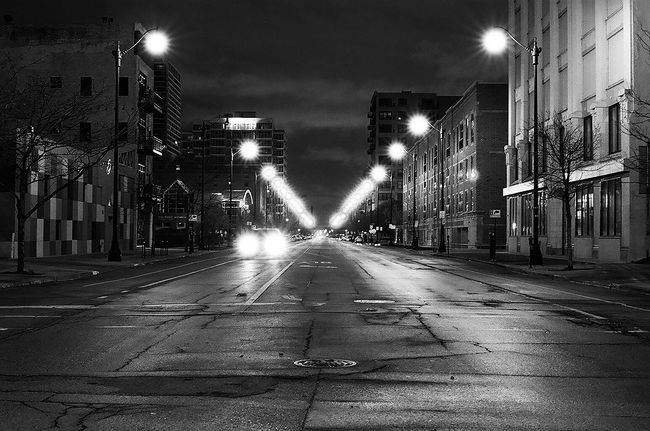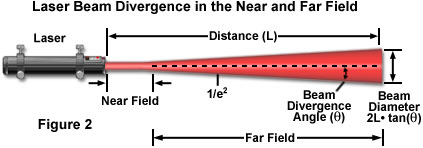Difference between revisions of "Magnification of the Sun at Sunset"
Tom Bishop (talk | contribs) |
Tom Bishop (talk | contribs) |
||
| Line 46: | Line 46: | ||
https://www.youtube.com/watch?v=MaPFBgGpdVU | https://www.youtube.com/watch?v=MaPFBgGpdVU | ||
| − | One should notice in the above video that the incoming headlights in the distance are not little specks of light, as would be expected in such a scene, but large spots of light. As in the previous example, the red tail lights are appropriately shrinking. | + | One should notice in the above video that the incoming headlights in the distance are not little specks of light, as would be expected in such a scene, but large spots of light. As in the previous example, the red tail lights are not intense enough and are appropriately shrinking. |
==Lamp Post Example== | ==Lamp Post Example== | ||
Revision as of 06:17, 5 June 2018
The phenomenon of the Sun's apparent magnification or shrinking throughout the day is a common cause of confusion among round earthers trying to understand the Flat Earth Theory. This article serves as an introduction to the subject.
Magnification and Shrinking
Q: If the sun is disappearing to perspective, shouldn't it get smaller as it recedes?
A: The sun remains the same size as it recedes into the distance due to a known magnification effect caused by the intense rays of light passing through the strata of the atmolayer.
From Chapter 10 of the book Earth Not a Globe we read:
|
The next time you observe the sunset notice how the sun is much hazier, diluted, and less intense than when it is overhead at noonday. This is a telltale sign that its rays are passing through a thick horizontal atmolayer, much like the light rays from a distant street lamp. The sun's intensity is so diluted when it is low in the sky that it is possible to look directly at it without squinting.
If you've ever seen a city at night you would know that distant light sources appear magnified from afar because they are shining though an atmoplanar medium. The farther you move away from the source, the more medium you put between you, the more magnified the lights appears. As you move towards the source the magnified lights shrink in appearance. As you move away the lights grows in diameter again.
Consider the picture to the right. You will immediately notice upon looking at the image that the distant lights in the scene appear magnified and intense, particularly the bright white ones in the upper left of the image. You should note that many of the the lights in the background are about as big as the lights in the foreground. This is entirely contradictory to what one would expect. The background lights are much farther away and the distant bulbs are all smaller than a single pixel of the screen. The lights maintaining their size in the background is a great example of the magnification effect of the atmolayer balancing out the natural shrinking to perspective.
As an analogy for the enlarging of the sun at sunset, lets imagine that we are in a dark room with a flashlight. We shine the light upon the wall, creating a distinct circle of light. If we walk backwards and recede away from the wall the spot of light grows in diameter. When we walk towards the wall the spot of light becomes smaller again. The same effect happens with the distant sun at sunset. Instead of a solid surface like a wall, however, the rays of light are shining upon the semi-transparent fog of the atmolayer between the observer and the sun. The natural shrinking of the sun due to perspective is counteracted by the enlarging effect of its light upon the horizontal strata of the atmolayer between you and the light source. This is how the sun's diameter is maintained throughout the day.
This effect has two criterion:
1. The effect only affects illuminating sources of light above a certain intensity. It does not happen with all lights or light sources.
2. The effect only affects illuminating bodies in the far field. It does not occur when the light source is too close to the observer or camera. Light sources in the far field will appear to be the same size in the distance.
Headlight Example
The light from these incoming headlights are a constant size down the highway as far as the eye could see.
Notice how it is only the intense headlights of the cars on the incoming lane which are magnified. The headlights on the lane coming towards us are all the same size. The intense light from the headlights have caught onto the atmoplane between the source and camera to create a magnification of the light. This magnification increases with distance, allowing the headlights to appear the same size down the entirety of the lane.
In contradiction, the red tail lights of the cars driving away from the camera are not intense enough to catch onto the atmoplane and are appropriately shrinking into the distance.
Headlight Video Example
The following video of headlights approaching the camera also illustrates this effect:
https://www.youtube.com/watch?v=MaPFBgGpdVU
One should notice in the above video that the incoming headlights in the distance are not little specks of light, as would be expected in such a scene, but large spots of light. As in the previous example, the red tail lights are not intense enough and are appropriately shrinking.
Lamp Post Example
Lamp posts may also exhibit this effect. The lights in the distance are not consistently shrinking:
Note: The lamps closest to the observer in the above image are slightly larger than the lamps in the distance, this is true. Lights very near to you are going to look bigger if the body physically bigger than the projection it is casting. A streetlight which is located at a distance of three inches from your eyeball will, of course, look bigger than a streetlight in the distance. Very close lights being bigger is not a contradiction. In these discussions we are primarily concerned with very distant lights in the far field. We can see that the very distant lights in that scene are not consistently shrinking, despite being as spaced out from each other as the nearest lights are. The shrinking seems to slow significantly as the distance increases, opposite of what one would expect. The most distant lights should be small specks, but instead appear relatively consistent in size with the other streetlights in the far field. This is evidence of a magnification effect.
In the case of the sun, the sun already starts off distant from you in the far field when it is overhead and then gets even more distant when it is traveling away from you. It is never in the near field like a streetlight might be.
Beam Divergence
This phenomenon of enlarging rays is also seen in lasers. Supposedly "straight" rays of light will spread out when shining over long distances. Also note that the effect doesn't affect the near field so much as the far field.
From the Wikipedia entry on Beam Divergence we read:
|
Questions and Answers
Q: Shouldn't the sun get blurrier if it is being magnified?
A: The sun actually does get a bit fuzzier when it is at the horizon compared to overhead at noonday.
Q: But shouldn't the sun get 4x blurrier if it is increasing its diameter by 4x, for example?
A: No. You are assuming that the sun is being magnified in a similar method as a magnifying glass, where blurriness occurs as a ratio with distance. This is incorrect. The magnification of the sun occurs through a projection. A projection of light is occurring upon the atmolayer between the sun and observer.
Q: Shouldn't polarized sun glasses or a welding mask be able to restore the sun to its actual state?
A: The explanation is describing a projection upon the atmoplane. The projection is appearing upon a medium between the source and the observer. Polarized sun glasses or welding masks are useful for reducing internal glare lens effects within the eye; but would only darken the scene in this external situation.





